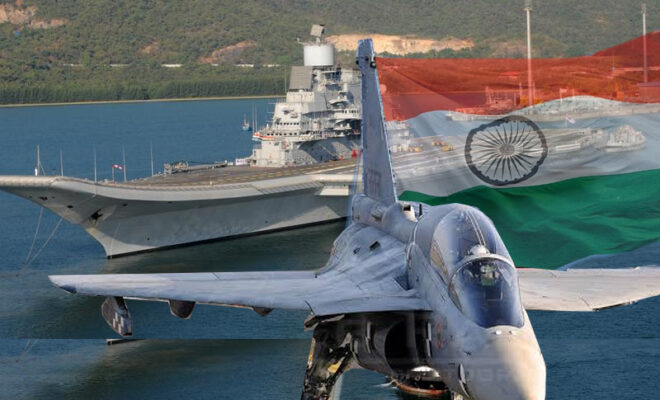Aircraft Carrier INS Vikramaditya To Start Sailing This Month

India’s first aircraft carrier INS Vikramaditya is scheduled to launch from major refitment at Karwar Naval base at the end of this month.
By the end of the year, when India’s two aircraft carriers are operational, their mission objectives in the Indo-Pacific will need to be established, and they must go beyond displaying maritime superiority and using force as diplomacy.
The end of this month is likely to see the completion of a significant refurbishment at Karwar Naval Base. When Prime Minister Narendra Modi delivers his speech at the Combined Commanders Conference in March, the INS Vikramaditya, India’s first aircraft carrier, will be in the spotlight. Around January 30, the battleship is anticipated to set sail, and sea trials will soon begin.
The two active aircraft carriers would strengthen India’s naval presence in the Indo-Pacific, even though the Indian Navy anticipates that both INS Vikramaditya and its replacement INS Vikrant will undergo flight tests before monsoon.
Soon, a decision will be made about the purchase of 26 maritime strike jets, including 8 trainers for INS Vikrant. The two top competitors are the French Rafale-M and the US F-18.
According to what is known, the Indian Navy has already sent the Defence Ministry the trial reports for the two fighters, and the Modi administration will base its choice on how well the planes perform.
The INS Vikramaditya is equipped with Russian MiG-29K fighters as its primary weapons, and this year, a maritime LCA landing on the ship is being evaluated as a test case scenario.
Until Visakhapatnam, on India’s eastern seaboard, has a jetty equipped to accommodate the massive war machines, both aircraft carriers will be stationed there.
In the interim, Campbell Bay in the island region of the Andamans and Nicobar Islands is being explored as a potential location for the Indian Navy to lease a carrier jetty in order to dock aircraft carriers.
Indian national security planners will need to develop a doctrine that specifies the goals or missions of these 2 carrier-based strike forces outside of the Bay of Bengal and Arabian Sea once there are two operational aircraft carriers by the end of this year.
In order to project influence throughout the Indo-Pacific and beyond, India does not require two aircraft carriers for naval control in the Arabian Sea or Bay of Bengal.
The Indian carrier-based forces will combat the PLA Navy while enhancing naval cooperation with QUAD nations in the Indo-Pacific, since three aircraft carriers from the Chinese Navy are anticipated to patrol the Indian Ocean by 2025.
In preparation for future maritime operations, PLA strategic surveillance vessels are already charting the Indian Ocean, particularly the 90-degree range and the five ingress straits to the South China Sea.
By presenting off-shore patrol vessels like the one currently being offered to Seychelles, Beijing has made an offer of naval cooperation to the littoral governments of the Indian Ocean.
The Indo-Pacific situation is heating up as Australia challenges Beijing in the distant Pacific and Japan prepares to counter the Chinese assault with US help. India will have to perform labor-intensive tasks in the Indian Ocean from Africa’s eastern coast to Australia’s west coast thanks to its two aircraft carriers.



